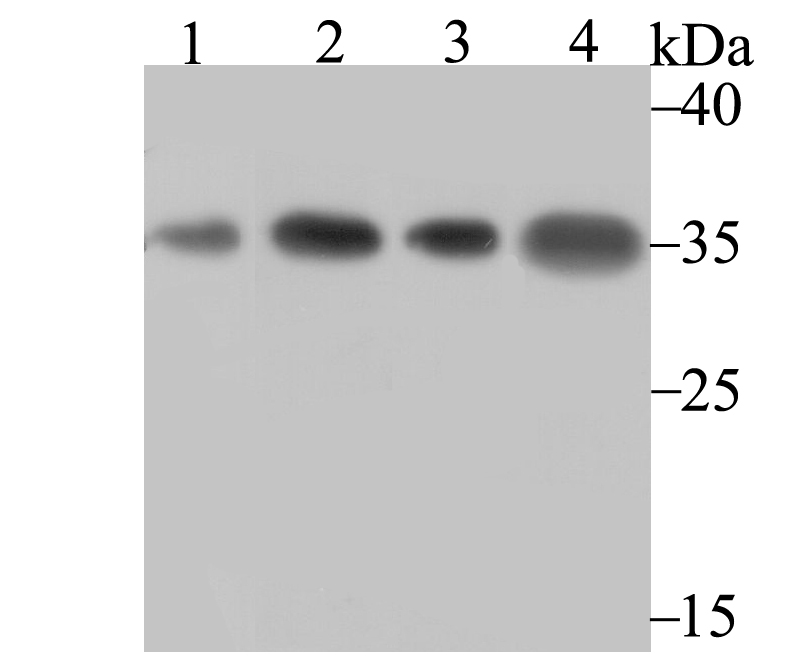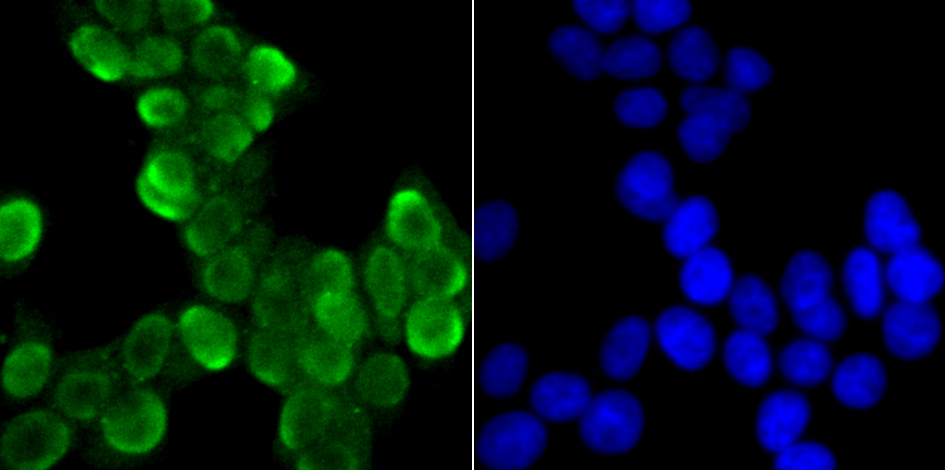Product Name :
U1A polyclonal antibody Background :
SNRPA (small nuclear ribonucleoprotein polypeptide A), also known as U1A (U1 snRNP protein A), is a component of the RNA spliceosome, a complex of proteins that are required for the precise excision of introns from pre-messenger RNA (pre-mRNA). Localizing to the nucleus, SNRPA contains two RRM (RNA recognition motif) domains, namely RRM1 and RRM2, and RRM1 specifically associates with the stem loop II of U1 snRNA (small nuclear RNA). In addition to functioning as a component of the U1 snRNP, SNRPA negatively regulates polyadenylation of SNRPA pre-mRNA, thereby negatively regulating itself. By inhibiting the addition of a polyA tail that would allow the pre-mRNA to mature, SNRPA causes the nuclear exosome degradation of the SNRPA pre-mRNA. At least 16% of cellular SNRPA also functions in an snRNP-free form (SF-A) that complexes with a group of non-snRNP proteins. Product :
Rabbit IgG, 1mg/ml in PBS with 0.02% sodium azide, 50% glycerol, pH7.2 Storage&Stability :
Store at +4°C after thawing. Aliquot store at -20°C. Avoid repeated freeze / thaw cycles. Specificity :
U1A polyclonal antibody detects endogenous levels of U1A protein. Immunogen :
Recombinant protein corresponding to N-terminal human U1A. Conjugate :
Unconjugated Modification :
Unmodification
U1A polyclonal antibody Background :
SNRPA (small nuclear ribonucleoprotein polypeptide A), also known as U1A (U1 snRNP protein A), is a component of the RNA spliceosome, a complex of proteins that are required for the precise excision of introns from pre-messenger RNA (pre-mRNA). Localizing to the nucleus, SNRPA contains two RRM (RNA recognition motif) domains, namely RRM1 and RRM2, and RRM1 specifically associates with the stem loop II of U1 snRNA (small nuclear RNA). In addition to functioning as a component of the U1 snRNP, SNRPA negatively regulates polyadenylation of SNRPA pre-mRNA, thereby negatively regulating itself. By inhibiting the addition of a polyA tail that would allow the pre-mRNA to mature, SNRPA causes the nuclear exosome degradation of the SNRPA pre-mRNA. At least 16% of cellular SNRPA also functions in an snRNP-free form (SF-A) that complexes with a group of non-snRNP proteins. Product :
Rabbit IgG, 1mg/ml in PBS with 0.02% sodium azide, 50% glycerol, pH7.2 Storage&Stability :
Store at +4°C after thawing. Aliquot store at -20°C. Avoid repeated freeze / thaw cycles. Specificity :
U1A polyclonal antibody detects endogenous levels of U1A protein. Immunogen :
Recombinant protein corresponding to N-terminal human U1A. Conjugate :
Unconjugated Modification :
Unmodification
-
 Western blot analysis of U1A on different lysates using anti-U1A antibody at 1/500 dilution. Positive control: Lane 1: Rat brain Lane 2: K562 Lane 3: A431 Lane 4: Mouse kidney
Western blot analysis of U1A on different lysates using anti-U1A antibody at 1/500 dilution. Positive control: Lane 1: Rat brain Lane 2: K562 Lane 3: A431 Lane 4: Mouse kidney -
 ICC staining U1A in 293T cells (green). The nuclear counter stain is DAPI (blue). Cells were fixed in paraformaldehyde, permeabilised with 0.25% Triton X100/PBS.
ICC staining U1A in 293T cells (green). The nuclear counter stain is DAPI (blue). Cells were fixed in paraformaldehyde, permeabilised with 0.25% Triton X100/PBS.
Bioworld Biotech only provide peptides for our antibodies and do not provide additional peptide customization services.
Price/Size :
USD 368/1mg/vial
Tips:
For phospho antibody, we provide phospho peptide(0.5mg) and non-phospho peptide(0.5mg).Describe :
Blocking peptides are peptides that bind specifically to the target antibody and block antibody binding. These peptide usually contains the epitope recognized by the antibody. Antibodies bound to the blocking peptide no longer bind to the epitope on the target protein. This mechanism is useful when non-specific binding is an issue, for example, in Western blotting (WB) and Immunohistochemistry (IHC). By comparing the staining from the blocked antibody versus the antibody alone, one can see which staining is specific; Specific binding will be absent from the western blot or IHC performed with the neutralized antibody.Formula:
Synthetic peptide was lyophilized with 100% acetonitrile and is supplied as a powder. Reconstitute with 0.1 ml DI water for a final concentration of 10 mg/ml.The purity is >90%,tested by HPLC and MS.
Storage:
The freeze-dried powder is more stable. For short time at 2-8°C. For long term storage store at -20°C.
Note :
This product is for research use only (RUO only). Not for use in diagnostic or therapeutic procedures.
 U1A polyclonal antibody
U1A polyclonal antibody  Datasheet
Datasheet COA
COA MSDS
MSDS SHIP
SHIP